Grenada
Grenada (/ɡrəˈneɪdə/ (![]()
Grenada Gwenad (Grenadian Creole French) | |
|---|---|
Motto: "Ever Conscious of God We Aspire, Build and Advance as One People"[1] | |
.svg.png) | |
| Capital and largest city | St. George's 12°03′N 61°45′W |
| Official languages | |
| Recognised regional languages | Grenadian Creole English Grenadian Creole French |
| Ethnic groups (2011[2]) |
|
| Religion (2011)[3] |
|
| Demonym(s) | Grenadian[4] |
| Government | Unitary two-party parliamentary constitutional monarchy |
• Monarch | Elizabeth II |
| Cécile La Grenade | |
• Prime Minister | Keith Mitchell |
| Legislature | Parliament |
| Senate | |
| House of Representatives | |
| Formation | |
• Associated State | 3 March 1967 |
• Independence from the United Kingdom | 7 February 1974 |
| 13 March 1979 | |
• Constitution Restoration | 4 December 1984 |
| Area | |
• Total | 348.5 km2 (134.6 sq mi) (185th) |
• Water (%) | 1.6 |
| Population | |
• 2018 estimate | 111,454[5][6] (194th) |
• Density | 318.58/km2 (825.1/sq mi) (45th) |
| GDP (PPP) | 2019 estimate |
• Total | $1.801 billion[7] |
• Per capita | $16,604[7] |
| GDP (nominal) | 2019 estimate |
• Total | $1.249 billion[7] |
• Per capita | $11,518[7] |
| HDI (2018) | high · 78th |
| Currency | East Caribbean dollar (XCD) |
| Time zone | UTC−4 (AST) |
| Driving side | left |
| Calling code | +1-473 |
| ISO 3166 code | GD |
| Internet TLD | .gd |
Before the arrival of Europeans in the Americas, Grenada was inhabited by the indigenous Arawaks and later by the Island Caribs.[9] Christopher Columbus sighted Grenada in 1498 during his third voyage to the Americas.[9] Although it was deemed the property of the King of Spain, there are no records to suggest the Spanish ever landed or settled on the island. Following several unsuccessful attempts by Europeans to colonise the island due to resistance from the Island Caribs, French settlement and colonisation began in 1650 and continued for the next century. On 10 February 1763, Grenada was ceded to the British under the Treaty of Paris. British rule continued until 1974 (except for a period of French rule between 1779 and 1783). From 1958 to 1962 Grenada was part of the Federation of the West Indies, a short-lived federation of British West Indian colonies. On 3 March 1967, Grenada was granted full autonomy over its internal affairs as an associated state.
Independence as a sovereign state was granted on 7 February 1974, without breaking formal ties with the Commonwealth, under the leadership of Eric Gairy, who became the first Prime Minister of Grenada, with Queen Elizabeth as Head of State.[9] In March 1979, the Marxist–Leninist New Jewel Movement overthrew Gairy's government in a popular bloodless coup d'état and established the People's Revolutionary Government (PRG), headed by Maurice Bishop as Prime Minister.[11] Bishop was later executed by military hardliners, prompting a U.S.-led invasion in October 1983. Since then democratic governance has been restored the island has remained politically stable.[9]
Etymology
The origin of the name "Grenada" is obscure, but it is likely that Spanish sailors named the island for the Andalusian city of Granada.[9][12] However it carried at least two other names during the Age of Discovery.
On his third voyage to the region in 1498, Christopher Columbus sighted Grenada and named it "La Concepción" in honour of the Virgin Mary. It is said that he may have actually named it "Assumpción", but it is uncertain, as he is said to have sighted what are now Grenada and Tobago from a distance and named them both at the same time. However, it became accepted that he named Tobago "Assumpción" and Grenada "La Concepción".[12]
In 1499, the Italian explorer Amerigo Vespucci traveled through the region with the Spanish explorer Alonso de Ojeda and mapmaker Juan de la Cosa. Vespucci is reported to have renamed the island "Mayo", although this is the only map where the name appears.[13]
However, by the 1520s, Spanish maps used the name "Granada" and the islands to the north Los Granadillos ("Little Granadas").[14] Although it was deemed the property of the King of Spain, there are no records to suggest the Spanish ever attempted to settle the island.[13]
The French maintained the name ("La Grenade" in French) after settlement and colonisation in 1649.[15] On 10 February 1763, the island of La Grenade was ceded to the British under the Treaty of Paris. The British renamed it "Grenada", one of many place name anglicisations they carried out on the island during this time.[16]
History
Pre-colonial history
Grenada was first populated by peoples from South America, possibly during the Caribbean Archaic Age, although definitive evidence is lacking. The earliest potential human presence comes from proxy evidence of lake cores, beginning ~3600 BC.[17] Less ephemeral, permanent villages began around ~AD 300.[18] The population peaked between AD 750-1250, with major changes in population afterwards, potentially the result of regional droughts and/or the "Carib Invasion",[19] although the latter rests on highly circumstantial evidence.[20]
European arrival
It is thought that Christopher Columbus was the first European to see Grenada in 1498 during his third voyage, naming it 'Concepción'.[21] The Spanish did not follow up on this and it was the English who were the first to attempt to colonise the island in 1609; however they were beaten off by the native Carib peoples.[21][22][22][23]
French colony (1649–1763)
In 1649 a French expedition of 203 men from Martinique led by Jacques Dyel du Parquet founded a permanent settlement on Grenada.[21][22][23] The French signed a peace treaty with the Carib chief Kairouane, but within months conflict broke out between the two communities.[24][25] This lasted until 1654 when the island was completely subjugated by the French.[26] The indigenous peoples who survived either left for neighbouring islands or retreated to remoter parts of Grenada, where they ultimately disappeared during the 1700s. Warfare continued during the 1600s between the French on Grenada and the Caribs of present-day Dominica and St. Vincent and the Grenadines.
The French named their new colony La Grenade, and the economy was initially based on sugar cane and indigo, worked by African slaves.[27] The French established a capital known as Fort Royal (later St. George's). To shelter from hurricanes the French navy would often take refuge in the capital's natural harbour, as no nearby French islands had a natural harbour to compare with that of Fort Royal. The British captured Grenada during the Seven Years' War in 1762.[21]
British colonial period
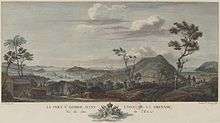
Early colonial period
Grenada was formally ceded to Britain by the Treaty of Paris in 1763.[21] The French re-captured the island during the American Revolutionary War, after Comte d'Estaing won the bloody land and naval Battle of Grenada in July 1779.[21] However the island was restored to Britain with the Treaty of Versailles in 1783.[21] A decade later dissatisfaction with British rule led to a pro-French revolt in 1795–96 led by Julien Fédon, which was successfully defeated by the British.[28][29]
As Grenada's economy grew, more and more African slaves were forcibly transported to the island. Britain eventually outlawed the slave trade within the British Empire in 1807, and slavery was outlawed completely in 1834.[21][30] In an effort to ameliorate the subsequent labour shortage, migrants from India were brought to Grenada in 1857.[22][23][31]
Nutmeg was introduced to Grenada in 1843 when a merchant ship called in on its way to England from the East Indies.[22][23] The ship had a small quantity of nutmeg trees on board which they left in Grenada, and this was the beginning of Grenada's nutmeg industry that now supplies nearly 40% of the world's annual crop.[32]
Later colonial period
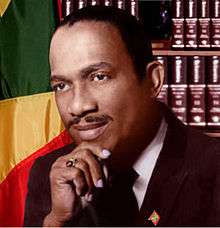
In 1877 Grenada was made a Crown colony. Theophilus A. Marryshow founded the Representative Government Association (RGA) in 1917 to agitate for a new and participative constitutional dispensation for the Grenadian people. Partly as a result of Marryshow's lobbying, the Wood Commission of 1921–22 concluded that Grenada was ready for constitutional reform in the form of a modified Crown colony government. This modification granted Grenadians the right to elect five of the 15 members of the Legislative Council, on a restricted property franchise enabling the wealthiest 4% of adult Grenadians to vote.[33] Marryshow was named a Commander of the Order of the British Empire (CBE) in 1943.
In 1950 Eric Gairy founded the Grenada United Labour Party (GULP), initially as a trade union, which led the 1951 general strike for better working conditions.[22][23][34] This sparked great unrest—so many buildings were set ablaze that the disturbances became known as the "red sky" days—and the British authorities decided to call in military reinforcements to help regain control of the situation. On 10 October 1951, Grenada held its first general elections on the basis of universal adult suffrage,[35] with Gairy's party winning six of the eight seats contested.[35]
From 1958 to 1962 Grenada was part of the Federation of the West Indies.[21][22][23] After the federation's collapse Grenada was granted full autonomy over its internal affairs as an Associated State on 3 March 1967.[21] Herbert Blaize of the Grenada National Party (GNP) was the first Premier of the Associated State of Grenada from March to August 1967. Eric Gairy served as Premier from August 1967 until February 1974.[21]
Post-independence era

Independence was granted on 7 February 1974, under the leadership of Eric Gairy, who became the first Prime Minister of Grenada.[21][22][23] Grenada opted to remain within the British Commonwealth, retaining Queen Elizabeth as Monarch, represented locally by a Governor-General. Civil conflict gradually broke out between Eric Gairy's government and some opposition parties, including the Marxist New Jewel Movement (NJM).[21] Gairy and the GULP won the 1976 Grenadian general election, albeit with an reduced majority;[21] however the opposition deemed the results invalid due to fraud and the violent intimidation performed by the so-called 'Mongoose Gang', a private militia loyal to Gairy.[36][37][38]
On 13 March 1979, whilst Gairy was out of the country, the NJM launched a bloodless coup which removed Gairy, suspended the constitution, and established a People's Revolutionary Government (PRG), headed by Maurice Bishop who declared himself Prime Minister.[21] His Marxist–Leninist government established close ties with Cuba, Nicaragua, and other communist bloc countries.[21] All political parties except for the New Jewel Movement were banned and no elections were held during the four years of PRG rule.
Invasion by the United States (1983)
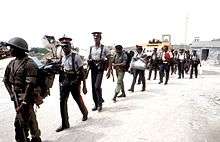
Coup and execution of Maurice Bishop
Some years later a dispute developed between Bishop and certain high-ranking members of the NJM. Though Bishop cooperated with Cuba and the USSR on various trade and foreign policy issues, he sought to maintain a "non-aligned" status. Bishop had been taking his time making Grenada wholly socialist, simultaneously encouraging private-sector development in an attempt to make the island a popular tourist destination. Hardline Marxist party members, including communist Deputy Prime Minister Bernard Coard, deemed Bishop insufficiently revolutionary and demanded that he either step down or enter into a power-sharing arrangement.
On 16 October 1983 Bernard Coard and his wife, Phyllis, backed by the Grenadian Army, led a coup against the government of Maurice Bishop and placed Bishop under house arrest.[21] These actions led to street demonstrations in various parts of the island because Bishop had widespread support from the population. Because Bishop was a widely popular leader, he was freed by impassioned supporters who marched en masse on his guarded residence from a rally in the capital's central square. Bishop then led the crowd to the island's military headquarters to reassert his power. Grenadian soldiers were dispatched in armored vehicles by the Coard faction to retake the fort. A confrontation between soldiers and civilians at the fort ended in gunfire and panic. Three soldiers and at least eight civilians died in the tumult that also injured 100 others, a school-sponsored study later found. When the initial shooting ended with Bishop's surrender, he and seven of his closest supporters were taken prisoner and executed by a firing squad of soldiers. Besides Bishop, the group included three of his cabinet ministers, a trade union leader and three service-industry workers.[39]
After the execution of Bishop, the People's Revolutionary Army (PRA) formed a Military-Marxist government with General Hudson Austin as chairman. The army declared a four-day total curfew, during which anyone leaving their home without approval would be shot on sight.[40]
United States and allied response and reaction
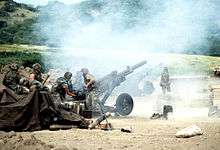
The overthrow of a moderately socialist government by one which was strongly pro-communist concerned the administration of US President Ronald Reagan. Reagan also claimed that particularly worrying was the presence of Cuban construction workers and military personnel building a 10,000-foot (3,000 m) airstrip on Grenada.[41] Bishop had stated the purpose of the airstrip was to allow commercial jets to land, but some US military analysts argued that the only reason for constructing such a long and reinforced runway was so that it could be used by heavy military transport planes. The contractors, American and European companies, and the EEC, which provided partial funding, all claimed the airstrip did not have military capabilities.[41] Reagan claimed that Cuba, under the direction of the Soviet Union, would use Grenada as a refuelling stop for Cuban and Soviet airplanes loaded with weapons destined for Central American communist insurgents.[42]
On 25 October 1983, combined forces from the United States and from the Regional Security System (RSS) based in Barbados invaded Grenada in an operation codenamed Operation Urgent Fury. The US stated this was done at the behest of the governments of Barbados and Dominica and the Governor-General of Grenada, Sir Paul Scoon.[43] Progress was rapid and within four days the Americans had removed the military government of Hudson Austin.
The invasion was heavily criticized by the governments of Britain,[44] Trinidad and Tobago, and Canada. The United Nations General Assembly condemned it as "a flagrant violation of international law" by a vote of 108 in favor to 9, with 27 abstentions.[45][46] The United Nations Security Council considered a similar resolution, which was supported by 11 nations. However, the United States vetoed the motion.[47]
Post-invasion arrests
After the invasion, the pre-revolutionary Grenadian constitution came into operation once again. Eighteen members of the PRG/PRA were arrested on charges related to the murder of Maurice Bishop and seven others. The 18 included the top political leadership of Grenada at the time of the execution, along with the entire military chain of command directly responsible for the operation that led to the executions. Fourteen were sentenced to death, one was found not guilty, and three were sentenced to 45 years in prison. The death sentences were eventually commuted to terms of imprisonment. Those in prison have become known as 'the Grenada 17'.[48]
Grenada since 1983
When US troops withdrew from Grenada in December 1983, Nicholas Brathwaite of the National Democratic Congress was appointed Prime Minister of an interim administration by Governor-General Scoon until elections could be organised.[21] The first democratic elections since 1976 were held in December 1984, and were won by the Grenada National Party under Herbert Blaize, who served as Prime Minister until his death in December 1989.[49][50]
Ben Jones briefly succeeded Blaize as Prime Minister and served until the March 1990 election,[51][52] which was won by the National Democratic Congress under Nicholas Brathwaite who returned as Prime Minister for a second time until he resigned in February 1995.[53] He was succeeded by George Brizan who served for a brief period[54] until the June 1995 election which was won by the New National Party under Keith Mitchell, who went on to win the 1999 and 2003 elections, serving for a record 13 years until 2008.[21] Mitchell re-established relations with Cuba and also reformed the country's banking system, which had come in for criticism over potential money laundering concerns.[21][22][23]
In 2000–02, much of the controversy of the late 1970s and early 1980s was once again brought into the public consciousness with the opening of the truth and reconciliation commission.[21] The commission was chaired by a Roman Catholic priest, Father Mark Haynes, and was tasked with uncovering injustices arising from the PRA, Bishop's regime, and before. It held a number of hearings around the country. Brother Robert Fanovich, head of Presentation Brothers' College (PBC) in St. George's tasked some of his senior students with conducting a research project into the era and specifically into the fact that Maurice Bishop's body was never discovered.[55] Paterson also uncovered that there was still a lot of resentment in Grenadian society resulting from the era and a feeling that there were many injustices still unaddressed.
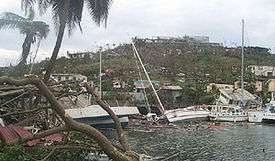
On 7 September 2004, after being hurricane-free for 49 years, the island was directly hit by Hurricane Ivan.[56] Ivan struck as a Category 3 hurricane, resulting in 39 deaths and damage or destruction to 90% of the island's homes.[21][22][23] On 14 July 2005, Hurricane Emily, a Category 1 hurricane at the time, struck the northern part of the island with 80-knot (150 km/h; 92 mph) winds, killing one person and causing an estimated USD $110 million (EC$297 million) worth of damage.[22][23][57] Agriculture, and in particular the nutmeg industry, suffered serious losses, but that event has begun changes in crop management and it is hoped that as new nutmeg trees gradually mature, the industry will gradually rebuild.
Mitchell was defeated in the 2008 election by the NDC under Tillman Thomas,[58][59] however he won the 2013 Grenadian general election by a landslide and the NNP returned to power,[60] winning again by another landslide in 2018.[61] In March 2020, Grenada confirmed its first case of Covid-19, of which the economic effects are expected to rival past downturns, including Hurricane Ivan.
Geography
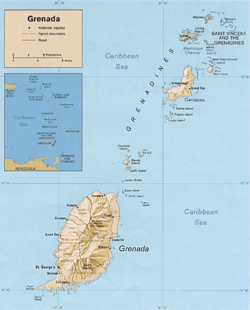
The island of Grenada is the southernmost island in the Antilles archipelago, bordering the eastern Caribbean Sea and western Atlantic Ocean, and roughly 140 km (90 mi) north of both Venezuela and Trinidad and Tobago. Its sister islands make up the southern section of the Grenadines, which include Carriacou, Petite Martinique, Ronde Island, Caille Island, Diamond Island, Large Island, Saline Island, and Frigate Island; the remaining islands to the north belong to St Vincent and the Grenadines. Most of the population lives on Grenada, and major towns there include the capital, St. George's, Grenville and Gouyave. The largest settlement on the sister islands is Hillsborough on Carriacou.
Grenada is of volcanic origin,[9] as evident in its soil, mountainous interior, and several explosion craters, including Lake Antoine, Grand Etang Lake and Levera Pond. Grenada's highest point is Mount St. Catherine, rising to 840 m (2,760 ft) above sea level.[9] Other major mountains include Mount Granby and South East Mountain. Several small rivers with waterfalls flow into the sea from these mountains. The coastline contains several bays, most notably on the southern coast which is split into numerous thin peninsulas.
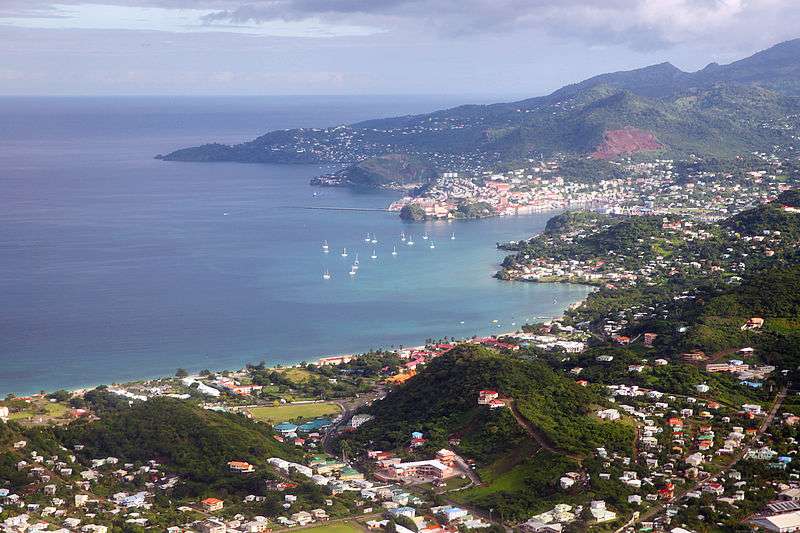
Climate
The climate is tropical: hot and humid in the dry season and cooled by the moderate rain fall in the wet season. Grenada, being on the southern edge of the hurricane belt, has suffered only three hurricanes in fifty years.
Hurricane Janet passed over Grenada on 23 September 1955, with winds of 185 km/h (115 mph), causing severe damage. The most recent storms to hit have been Hurricane Ivan on 7 September 2004, causing severe damage and thirty-nine deaths, and Hurricane Emily on 14 July 2005, causing serious damage in Carriacou and in the north of Grenada, which had been relatively lightly affected by Hurricane Ivan.
Politics
Grenada is a Commonwealth realm with Queen Elizabeth II as head of state, represented locally by a Governor-General.[9][21] Executive power lies with the head of government, the Prime Minister. The Governor-General role is largely ceremonial, while the Prime Minister is usually the leader of the largest party in Parliament.[9]
The Parliament of Grenada consists of a Senate (13 members) and a House of Representatives (15 members). Senators are appointed by the government and the opposition, while the Representatives are elected by the population for five-year terms.[9] Grenada operates a multi-party system, with the largest parties being the center-right New National Party (NNP) and the center-left National Democratic Congress (NDC).[9]
Foreign relations
Grenada is a full and participating member of both the Caribbean Community (CARICOM) and the Organisation of Eastern Caribbean States (OECS).[9]
The Commonwealth
Grenada is, along with much of the Caribbean region, a member of the Commonwealth of Nations. The organization, which is primarily the old British colonies, focuses on fostering international relations between its members.
Organization of American States (OAS)
Grenada is one of the 35 states which has ratified the OAS charter and is a member of the Organization.[62][63] Grenada entered into the Inter-American system in 1975 according to the OAS's website.[64]
Double Taxation Relief (CARICOM) Treaty
On 6 July 1994 at Sherbourne Conference Centre in St. Michael, Barbados, George Brizan signed the Double Taxation Relief (CARICOM) Treaty on behalf of the Government of Grenada.[65] This treaty covered concepts such as taxes, residence, tax jurisdictions, capital gains, business profits, interest, dividends, royalties and other areas.
FATCA
On 30 June 2014, Grenada signed a Model 1 agreement with the United States of America in relation to Foreign Account Tax Compliance Act (FATCA).[66]
Military
Grenada has no standing military, leaving typical military functions to the Royal Grenada Police Force (including a Special Service Unit) and the Coast Guard of Grenada.[9]
In 2019, Grenada signed the UN treaty on the Prohibition of Nuclear Weapons.[67]
Administrative divisions
Grenada is divided into six parishes:[9]Carriacou and Petite Martinique (not pictured) have the status of a dependency.[9]
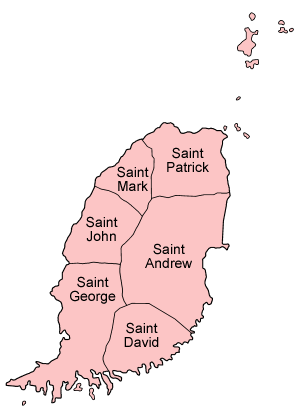

Economy
Grenada has a small economy in which tourism is the major foreign exchange earner.[9] Major short-term concerns are the rising fiscal deficit and the deterioration in the external account balance. Grenada shares a common central bank and a common currency (the East Caribbean dollar) with seven other members of the Organisation of Eastern Caribbean States (OECS).[9][70]
Grenada has suffered from a heavy external debt problem, with government debt service payments running at about 25% of total revenues in 2017; Grenada was listed as ninth from bottom in a study of 126 developing countries.[71]
Agriculture and exports
Grenada is an exporter of several different spices, most notably nutmeg, its top export and depicted on the national flag, and mace.[72][10] Other major exports include bananas, cocoa, fruit and vegetables, clothing, chocolate and fish.[9]
Tourism
Tourism is the mainstay of Grenada's economy.[9] Conventional beach and water-sports tourism is largely focused in the southwest region around St George, the airport and the coastal strip. Ecotourism is growing in significance. Most small ecofriendly guesthouses are located in the Saint David and Saint John parishes. The tourism industry is increasing dramatically with the construction of a large cruise ship pier and esplanade.
Tourism is concentrated in the southwest of the island, around St. George's, Grand Anse, Lance Aux Epines, and Point Salines. Grenada has many beaches around its coastline, including the 3 km (1.9 mi) long Grand Anse Beach in St George, often hailed as one of the best beaches in the world.[73] Grenada's many waterfalls are also popular with tourists. The nearest to St. George's is the Annandale Waterfalls, but other notable ones like Mt. Carmel, Concord, Seven Sisters and Tufton Hall also being within easy reach.[74]
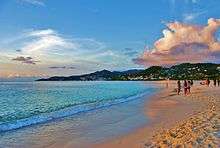
Several festivals also draw in tourists, such as Carriacou Maroon and String Band Music Festival in April,[75][75] the Annual Budget Marine Spice Island Bill Fish Tournament,[76] the Island Water World Sailing Week[77] and the Grenada Sailing Festival Work Boat Regatta.
Education
Education in Grenada consists of kindergarten, pre-primary school, primary school, secondary school and tertiary education. The government has prioritised education, spending 10.3% of its budget to the sector in 2016, the third highest rate in the world.[9] Literacy rates are very high, with 98.6% of the population being able to read and write.[9] Schools include:
Primary Schools
- St. Patrick's Roman Catholic Primary School
- St. Patrick's Anglican Primary
- Mt. Rose's Seventh Day Adventist Primary School
- Chantimelle Primary School
- St. Dominic's R.C. School
- St. George's Anglican Senior School
- St. George's Government School
- Paraclete Government School
Secondary Schools
- Anglican High School
- Grenada Boys' Secondary School, established in 1885
- Mac Donald's College
- St. Joseph's Convent (St. Andrew/St. George)
- BishGrenada Critian Academy
- St. Mark's Secondary School
- St. John's Christian Secondary School
- St. Andrew's Anglican Secondary School
- Mt. Rose Seventh Day Adventist Secondary School
- Westerhall Secondary School
- Wesley College
- Beacon High School
- Westmorland Secondary School
- Grenville Secondary School
- J.W. Fletcher Secondary School
- Bishop's College (Carriacou)
- Hillsborough Secondary School (Carriacou)
Tertiary education
- St. George's University, one of the Organisation of American States (OAS) Consortium of Universities[78]
- T.A. Marryshow Community College
- UWI Open Campus in Grenada
- New Life Organisation (NEWLO)
Transport
Maurice Bishop International Airport is Grenada's main airport,[9] connecting the country with other Caribbean islands, the United States, Canada, and Europe. There is also an airport on Carriacou.[21] There is a daily fast ferry service between St. George's and Hillsborough.
Demographics
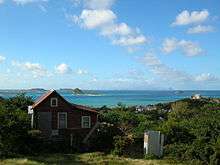
A majority of Grenadians (82%[2]) are descendants of the African slaves.[9][21] Few of the indigenous Carib and Arawak population survived the French purge at Sauteurs. A small percentage of descendants of indentured workers from India were brought to Grenada between 1857 and 1885, predominantly from the states of Bihar and Uttar Pradesh. Today, Grenadians of Indian descent constitute 2.2% of the population.[9] There is also a small community of French and English descendants.[21] The rest of the population is of mixed descent (13%).[2]
Grenada, like many of the Caribbean islands, is subject to a large amount of out-migration, with a large number of young people seeking more prospects abroad. Popular migration points for Grenadians include more prosperous islands in the Caribbean (such as Barbados), North American Cities (such as New York City, Toronto and Montreal), the United Kingdom (in particular, London and Yorkshire; see Grenadians in the UK) and Australia.
Religion
Religion in Grenada (2011 estimate)[79]
Figures are 2011 estimates[79]
- Protestant 49.2%; includes
- Pentecostal 17.2%
- Seventh Day Adventist 13.2%
- Anglican 8.5%
- Baptist 3.2%
- Church of God 2.4%
- Evangelical 1.9%
- Methodist 1.6%
- other 1.2%
- Roman Catholic 36%
- none 5.7%
- unspecified 1.3%
- Jehovah's Witness 1.2%
- Rastafarian 1.2%
- other 5.5%
Languages
English is the country's official language[9] but the main spoken language is either of two creole languages (Grenadian Creole English and, less frequently, Grenadian Creole French) (sometimes called 'patois') which reflects the African, European, and native heritage of the nation. The creoles contain elements from a variety of African languages, French and English. Grenadian Creole French is mainly spoken in smaller rural areas.
Some Hindi/Bhojpuri terms are still spoken amongst the Indo-Grenadian community descendants.
The indigenous languages were Iñeri and Karina (Carib).
Culture
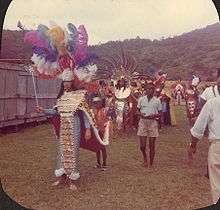
Island culture is heavily influenced by the African roots of most of the Grenadians, coupled with the country's long experience of colonial rule under the British. Although French influence on Grenadian culture is much less visible than on some other Caribbean islands, surnames and place names in French remain, and the everyday language is laced with French words and the local Creole, or Patois.[9] Stronger French influence is found in the well seasoned spicy food and styles of cooking similar to those found in New Orleans, and some French architecture has survived from the 1700s. Indian and Carib Amerindian influence is also seen, especially in the island's cuisine.
The "oildown" is considered to be the national dish.[80] The name refers to a dish cooked in coconut milk until all the milk is absorbed, leaving a bit of coconut oil in the bottom of the pot. Early recipes call for a mixture of salted pigtail, pig's feet (trotters), salt beef and chicken, dumplings made from flour, and provision like breadfruit, green banana, yam and potatoes. Callaloo leaves are sometimes used to retain the steam and add extra flavour.[80]
Soca, calypso, and reggae are popular music genres and are played at Grenada's annual Carnival. Over the years rap music became popular amongst Grenadian youths, and there have been numerous young rappers emerging in the island's underground rap scene. Zouk is also being slowly introduced onto the island.
An important aspect of the Grenadian culture is the tradition of story telling, with folk tales bearing both African and French influences. The character, Anancy, a spider who is a trickster, originated in West Africa and is prevalent on other islands as well. French influence can be seen in La Diablesse, a well-dressed she-devil, and Loogaroo (from "loup-garou"), a werewolf.
Sports
Olympics
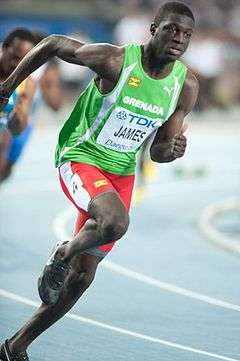
Grenada has competed in every Summer Olympics since the 1984 Summer Olympics in Los Angeles. Kirani James won the first Olympic gold medal for Grenada in the men's 400 meters in 2012 in London and silver in 2016.
Cricket
As with other islands from the Caribbean, cricket is the national and most popular sport and is an intrinsic part of Grenadian culture. The Grenada national cricket team forms a part of the Windward Islands cricket team in regional domestic cricket, however it plays as a separate entity in minor regional matches,[81] as well as having previously played Twenty20 cricket in the Stanford 20/20.[82]
The Grenada National Cricket Stadium in St. George's hosts domestic and international cricket matches. Devon Smith, West Indies record holder to win the List-A West Indian domestic competition for the second time, was born in the small town of Hermitage.
In April 2007 Grenada jointly hosted (along with several other Caribbean nations) the 2007 Cricket World Cup. The Island's Prime Minister was the CARICOM representative on cricket and was instrumental in having the World Cup games brought to the region. After Hurricane Ivan, the government of the People's Republic of China (PRC) paid for the new $40 million national stadium and provided the aid of over 300 labourers to build and repair it.[83] During the opening ceremony, the anthem of the Republic of China (ROC, Taiwan) was accidentally played instead of the PRC's anthem, leading to the firing of top officials.[84][85]
Notes
- "Government of Grenada Website". Retrieved 1 November 2007.
- "Grenada". The World Factbook. Central Intelligence Agency (CIA). Retrieved 19 March 2012.
- https://www.cia.gov/library/publications/the-world-factbook/geos/gj.html
- "About Grenada, Carriacou & Petite Martinique | GOV.gd". www.gov.gd. Retrieved 31 July 2017.
- ""World Population prospects – Population division"". population.un.org. United Nations Department of Economic and Social Affairs, Population Division. Retrieved 9 November 2019.
- ""Overall total population" – World Population Prospects: The 2019 Revision" (xslx). population.un.org (custom data acquired via website). United Nations Department of Economic and Social Affairs, Population Division. Retrieved 9 November 2019.
- "Grenada". International Monetary Fund. 2018. Retrieved 1 April 2018.
- "Human Development Report 2019" (PDF). United Nations Development Programme. 10 December 2019. Retrieved 10 December 2019.
- "CIA World Factbook – Grenada". Retrieved 12 July 2019.
- "Grenada | History, Geography, & Points of Interest". Encyclopedia Britannica. Retrieved 12 June 2020.
- Jacobs, Curtis (1 January 2015), "Grenada, 1949–1979: Precursor to Revolution", The Grenada Revolution, University Press of Mississippi, ISBN 978-1-62846-151-0, retrieved 14 May 2020
- Crask, Paul (1 January 2009). Grenada, Carriacou and Petite Martinique. Bradt Travel Guides. p. 5. ISBN 9781841622743.
grenada name.
- Crask, Paul (1 January 2009). Grenada, Carriacou and Petite Martinique. Bradt Travel Guides. p. 6. ISBN 9781841622743.
grenada name.
- Martin, John Angus (2013). Island Caribs and French Settlers in Grenada: 1498-1763. St George’s, Grenada: Grenada National Museum Press. ISBN 9781490472003.
- Martin, John Angus (2013). Island Caribs and French Settlers in Grenada: 1498-1763. St George’s, Grenada: Grenada National Museum Press. ISBN 9781490472003.
- Crask, Paul (1 January 2009). Grenada, Carriacou and Petite Martinique. Bradt Travel Guides. p. 7. ISBN 9781841622743.
grenada name.
- Siegel, Peter E.; Jones, John G.; Pearsall, Deborah M.; Dunning, Nicholas P.; Farrell, Pat; Duncan, Neil A.; Curtis, Jason H.; Singh, Sushant K. (2015). "Paleoenvironmental Evidence for First Human Colonization of the Eastern Caribbean". Quaternary Science Reviews. 129: 275–295. doi:10.1016/j.quascirev.2015.10.014.
- Hanna, Jonathan A. (2019). "Camáhogne's Chronology: The Radiocarbon Settlement Sequence on Grenada". The Journal of Anthropological Archaeology. 55: 101075. doi:10.1016/j.jaa.2019.101075.
- Hanna, Jonathan A. (2018). "Grenada and the Guianas: Demography, Resilience, and Terra Firme during the Caribbean Late Ceramic Age". World Archaeology. 50 (4): 651–675. doi:10.1080/00438243.2019.1607544.
- Whitehead, Neil (1995). Wolves from the Sea: Readings in the Anthropology of the Native Caribbean. Leiden: KITLV Press.
- "Encyclopedia Britannica – Grenada". Retrieved 12 July 2019.
- Steele, pp. 35–36
- "About Grenada: Historical Events". Retrieved 13 July 2019.
- Crouse, Nellis Maynard (1940). French pioneers in the West Indies, 1624–1664. New York: Columbia university press. p. 196.
- Steele, Beverley A. (2003). Grenada: A History of Its People. Macmillan Caribbean. pp. 39–48. ISBN 0333930533.
- Grenada. A History of its People. Steele, Beverley A. 2003. Macmillan Publishers Limited. ISBN 0-333-93053-3, pp. 35–44.
- Steele, p. 59
- Jacobs, Curtis. The Fédons of Grenada, 1763–1814 Archived 31 August 2008 at the Wayback Machine. University of the West Indies. Retrieved 10 March 2013.
- Cox, Edward L. (1 January 1982). "Fedon's Rebellion 1795–96: Causes and Consequences". The Journal of Negro History. 67 (1): 7–19. doi:10.2307/2717757. JSTOR 2717757.
- "Encyclopedia Britannica – Anguilla". Retrieved 12 July 2019.
- "About Grenada: Historical Events". GOV.gd. 7 May 2013. Retrieved 16 March 2015.
- "Grenada Nutmeg – GCNA – Organic Nutmeg Producers, Nutmeg Oil – Nutmeg trees – Nutmeg farming in Grenada". Travelgrenada.com. Archived from the original on 23 March 2012. Retrieved 19 March 2012.
- "From Old Representative System to Crown Colony". Bigdrumnation.org. 1 July 2008. Retrieved 19 March 2012.
- "Eric Gairy - Caribbean Hall of Fame". caribbean.halloffame.tripod.com.
- "1951 and Coming of General Elections". BigDrumNation. Retrieved 19 March 2012.
- Nohlen, D (2005) Elections in the Americas: A data handbook, Volume I, p301-302 ISBN 978-0-19-928357-6
- "Grenada : History". Retrieved 8 October 2013.
- "The end of Eric Gairy". Retrieved 1 June 2016.
- Kukielski, Philip (2019). The U.S. Invasion of Grenada : legacy of a flawed victory. Jefferson, North Carolina: McFarland & Company. pp. 183–84. ISBN 978-1-4766-7879-5. OCLC 1123182247.
- Anthony Payne, Paul Sutton and Tony Thorndike (1984). "Grenada: Revolution and Invasion". Croom Helm. Retrieved 10 September 2009.
- Gailey, Phil; Warren Weaver Jr. (26 March 1983). "Grenada". The New York Times. Retrieved 11 July 2010.
- Julie Wolf (1999–2000). "The Invasion of Grenada". PBS: The American Experience (Reagan). Retrieved 10 September 2009.
- Autobiography: Sir Paul Scoon 'Survival for Service' (Macmillan Caribbean, 2003)(pp. 135–136)
- Charles Moore, Margaret Thatcher: At her Zenith (2016) p. 130.
- "United Nations General Assembly resolution 38/7". United Nations. 2 November 1983. Archived from the original on 16 March 2008.
- "Assembly calls for cessation of 'armed intervention' in Grenada". UN Chronicle. 1984. Archived from the original on 27 June 2007.
- Richard Bernstein (29 October 1983). "U.S. VETOES U.N. RESOLUTION 'DEPLORING' GRENADA INVASION". The New York Times. Retrieved 8 July 2012.
- Amnesty International (October 2003). "The Grenada 17: the last of the cold war prisoners?" (PDF).
- Political Parties of the World (6th edition, 2005), ed. Bogdan Szajkowski, page 265.
- "Jan 1985 – General election and resumption of Parliament – Formation of Blaize government – Foreign relations Opening of airport – Start of murder trial", Keesing's Record of World Events, volume 31, January 1985, Grenada, page 33,327.
- "Grenada profile". 12 March 2018 – via www.bbc.co.uk.
- "Biography: Ben Jones | GOV.gd". www.gov.gd.
- "Former Grenadian PM Nicholas Brathwaite dies". Jamaica Observer. 29 October 2016. Retrieved 5 November 2016.
- "Feb 1995 – New Prime Minister – Government changes", Keesing's Record of World Events, Volume 41, February 1995 Grenada, Page 40402.
- See Maurice Paterson's book, published before this event, called Big Sky Little Bullet
- Green, Eric (24 February 2005). "Grenada Making Comeback from Hurricane Ivan". United States Department of State. Archived from the original on 22 November 2006. Retrieved 3 November 2011.
- James L. Franklin & Daniel P. Brown (10 March 2006). "Tropical Cyclone Report: Hurricane Emily" (PDF). National Hurricane Center. NOAA. Retrieved 13 March 2006.
- "New Grenada prime minister vows to boost economy, lower cost of living". Associated Press via International Herald Tribune. 9 July 2008. Archived from the original on 4 August 2008. Retrieved 31 July 2011.
- George Worme, "Thomas wins by a landslide in Grenada" Archived 14 July 2008 at the Wayback Machine, The Nation (Barbados), 10 July 2008.
- "Clean sweep", Jamaica Observer, 21 February 2013.
- "Clean sweep! Grenada PM predicts repeat victory". WIC News. 9 November 2017. Retrieved 9 November 2017.
- "Member States". OAS. Retrieved 18 May 2017.
- "SLA :: Department of International Law (DIL) :: Inter-American Treaties". OAS. Retrieved 18 May 2017.
- "Member State :: Grenada". OAS. Retrieved 18 May 2017.
- "The double taxation relief (Caricom) order, 1994" (PDF).
- "Foreign Account Tax Compliance Act (FATCA)". Treasury.gov. Retrieved 18 May 2017.
- "Chapter XXVI: Disarmament – No. 9 Treaty on the Prohibition of Nuclear Weapons". United Nations Treaty Collection. 7 July 2017.
- Avery, Daniel (4 April 2019). "71 Countries Where Homosexuality is Illegal". Newsweek.
- "State-Sponsored Homophobia". International Lesbian Gay Bisexual Trans and Intersex Association. 20 March 2019.
- "Welcome to the OECS". Oecs.org. Retrieved 28 June 2010.
- Elliott, Larry (18 March 2018). "Developing countries at risk from US rate rise, debt charity warns". Retrieved 19 March 2018. Jubilee Debt Campaign study
- "Nutmeg, mace and cardamons (HS: 0908) Product Trade, Exporters and Importers". oec.world. Retrieved 12 June 2020.
- "The 10 Best Beaches in the World". The Daily Telegraph. London.
- Cruisemanic. "Top 10 Things to Do in Grenada". Cruise Panorama.
- "11th Carriacou Maroon & String Band Music Festival | Events | Plan Your Vacation". www.grenadagrenadines.com. Retrieved 25 November 2019.
- "51st Annual Budget Marine Spice Island Billfish Tournament | Events | Plan Your Vacation". www.grenadagrenadines.com. Retrieved 25 November 2019.
- "Event Schedule". Grenada Sailing Week. 27 February 2018. Retrieved 25 November 2019.
- "Scholarships". OAS. Retrieved 18 May 2017.
- "Central America and Caribbean :: GRENADA". CIA The World Factbook.
- "Oil down – National Dish of Grenada". Gov.gd. 5 March 2010. Retrieved 19 March 2012.
- "Other Matches played by Grenada". CricketArchive. Retrieved 9 August 2014.
- "Twenty20 Matches played by Grenada". CricketArchive. Retrieved 9 August 2014.
- "Grenada: Bandleader Loses Job in Chinese Anthem Gaffe". The New York Times. Associated Press. 8 February 2007. Retrieved 5 August 2008.
- "BBCCaribbean.com | Grenada goofs: anthem mix up". BBC. 5 February 2007. Retrieved 28 June 2010.
- Scott Conroy (3 February 2007). "Taiwan Anthem Played For China Officials". CBS News. Retrieved 28 June 2010.
References
- Adkin, Mark. 1989. Urgent Fury: The Battle for Grenada: The Truth Behind the Largest US Military Operation Since Vietnam. Trans-Atlantic Publications. ISBN 0-85052-023-1
- Beck, Robert J. 1993. The Grenada Invasion: Politics, Law, and Foreign Policy Decisionmaking. Boulder: Westview Press. ISBN 0-8133-8709-4
- Brizan, George 1984. Grenada Island of Conflict: From Amerindians to People's Revolution 1498–1979. London, Zed Books Ltd., publisher; Copyright, George Brizan, 1984.
- Martin, John Angus. 2007. A–Z of Grenada Heritage. Macmillan Caribbean.
- "Grenada Heritage". Grenadaheritage.com. Archived from the original on 10 May 2011. Retrieved 28 June 2010.
- Sinclair, Norma. 2003. Grenada: Isle of Spice (Caribbean Guides). Interlink Publishing Group; 3rd edition. ISBN 0-333-96806-9
- Stark, James H. 1897. Stark's Guide-Book and History of Trinidad including Tobago, Grenada, and St. Vincent; also a trip up the Orinoco and a description of the great Venezuelan Pitch Lake. Boston, James H. Stark, publisher; London, Sampson Low, Marston & Company.
- Steele, Beverley A. 2003. Grenada: A History of Its People (Island Histories). MacMillan Caribbean. ISBN 0-333-93053-3
External links

- Official Website of the Government of Grenada
- Chief of State and Cabinet Members
- "Grenada". The World Factbook. Central Intelligence Agency.
- Grenada at UCB Libraries GovPubs.
- Grenada at Curlie
- Grenada from the BBC News.
- Presentation Brothers College
- Key Development Forecasts for Grenada from International Futures.
- The Grenada Newsletter, 1974–1994 in the Digital Library of the Caribbean
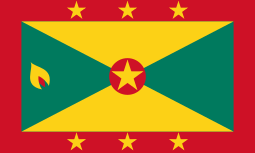

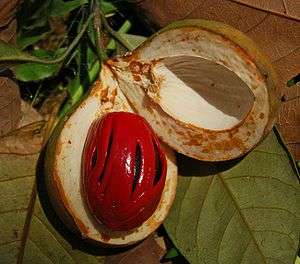
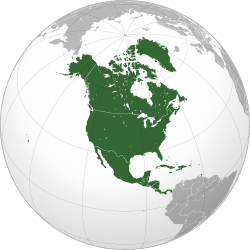

Countries.png)